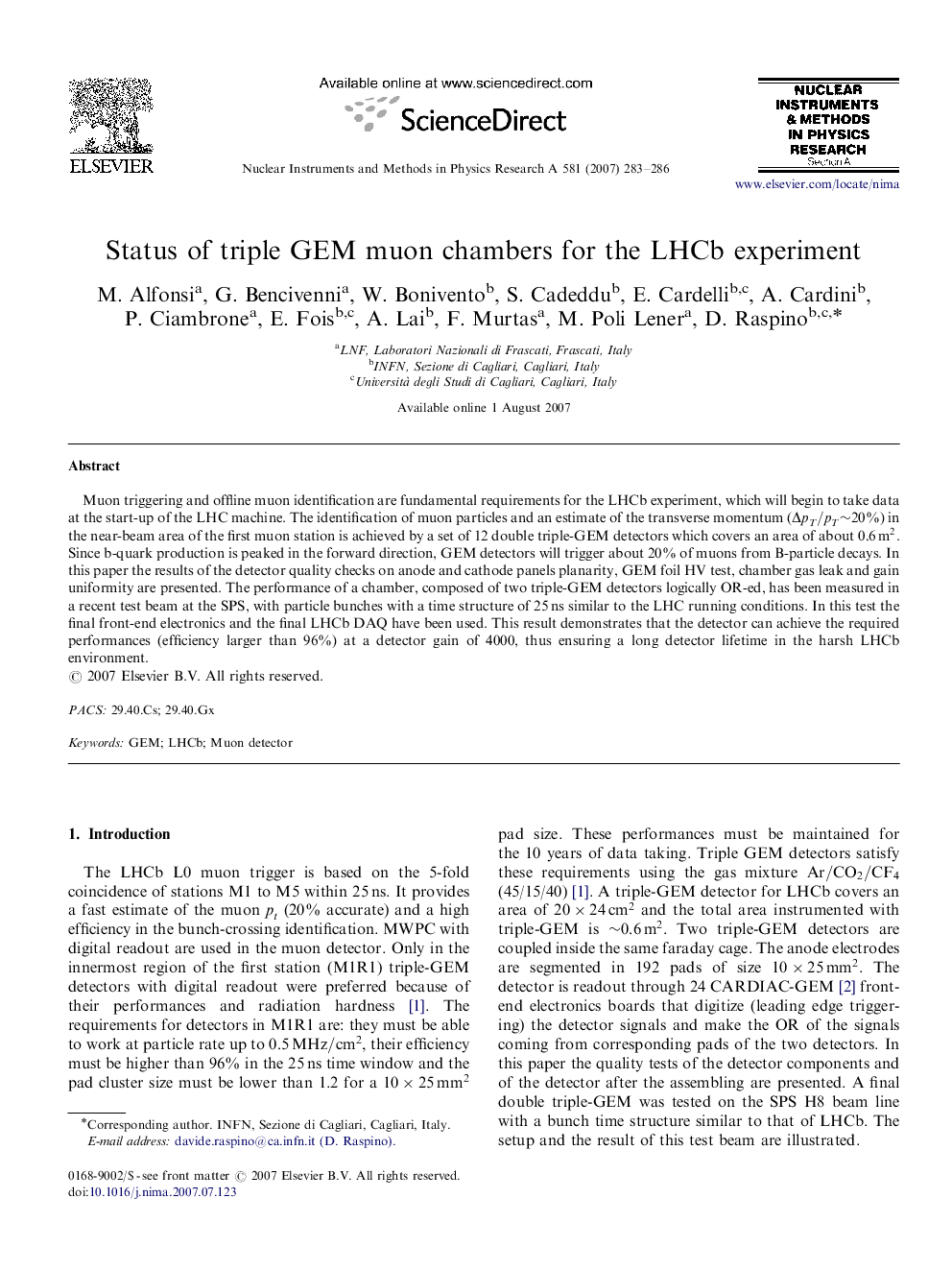| Article ID | Journal | Published Year | Pages | File Type |
|---|---|---|---|---|
| 1829897 | Nuclear Instruments and Methods in Physics Research Section A: Accelerators, Spectrometers, Detectors and Associated Equipment | 2007 | 4 Pages |
Muon triggering and offline muon identification are fundamental requirements for the LHCb experiment, which will begin to take data at the start-up of the LHC machine. The identification of muon particles and an estimate of the transverse momentum (ΔpT/pT∼20%ΔpT/pT∼20%) in the near-beam area of the first muon station is achieved by a set of 12 double triple-GEM detectors which covers an area of about 0.6m2. Since b-quark production is peaked in the forward direction, GEM detectors will trigger about 20% of muons from B-particle decays. In this paper the results of the detector quality checks on anode and cathode panels planarity, GEM foil HV test, chamber gas leak and gain uniformity are presented. The performance of a chamber, composed of two triple-GEM detectors logically OR-ed, has been measured in a recent test beam at the SPS, with particle bunches with a time structure of 25 ns similar to the LHC running conditions. In this test the final front-end electronics and the final LHCb DAQ have been used. This result demonstrates that the detector can achieve the required performances (efficiency larger than 96%) at a detector gain of 4000, thus ensuring a long detector lifetime in the harsh LHCb environment.
